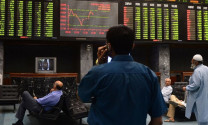Budget FY24: missing the bus again
Govt fails to address issues of excessive spending, narrow industrial base

The macroeconomic instability that plagues Pakistan today dates back to 1989 –the year which marked the end of Afghanistan’s invasion and consequently, the stoppage/ slowdown of US aid through the Pressler Amendment.
This was the exact time when we entered our first External Fund Facility (EFF) with the International Monetary Fund (IMF).
Despite the repeated programmes, the growth in the 1990s remained around 2-3%. This growth, however, was accompanied by a relatively high inflation, low employment, low current account and budgetary deficits.
Though the decade of the 90s brought in its wake large-scale privatisation and opening up of the economy to the rest of the world for trade and investment, the brewing political instability of those times never allowed the government to concentrate on structural and long-term issues, let alone remedy them.
Post-9/11, the Musharraf era was again backed by a huge amount of American aid, and resultantly we again went through a six-year boom period with high growth, led by unprecedented consumption.
As ill luck would have it, we literally danced this boom period away, without thinking about putting the country on a viable economic path. Rather, to make things worse, we signed a not-so-beneficial Pakistan-China free trade agreement, which eroded the industrial base and led to such enormous current account deficits in the succeeding years that it was impossible to wriggle out of them.
The next stint of political and economic stability started after the APS attack in 2014 and ended in 2017 with the Panama Paper case. In this brief period, we again faltered on an excessive instalment of electricity, based on sovereign loans, due to performance pressure in a charged political atmosphere.
The PTI government was challenged initially by a huge current account deficit and started a relatively stable economic rule in May 2019, which ended in August 2022, with the Taliban’s takeover of Kabul. Again, this era only focused on short-term wins to appease its electorate and economic elite. The current government again faces a restricted, uncertain and short-term horizon.
All this means that post-2007, Pakistan is being run by governments plagued by massive political instability, leading to a set of economic policies, either aimed at providing quick popular wins, or focused on averting the economic crisis of that particular time.
The latest budget is no exception to this, now chronic, ailment. This time again we have failed to address the fundamental issues of excessive and unnecessary government spending, narrow tax and industrial base, bad governance at the micro economic level, institutional decay and low yield and inadequate exports.
An analysis of the budget reveals that in the total expenditure (current plus capital) estimated for next year, 18% has been earmarked for the payment of foreign loan installments, 30% for the payment of interest on internal and external borrowing, 21% for the distribution to provinces, 18% for salaries, pensions, government expenses on other functional and non-functional institutions and electricity subsidy, 7% for defence, and 6% for new development projects.
As opposed to it, the country’s receipts will be financed 16% by income tax, 15% by sales tax, 5% by customs duty, 3% by FED, 12% by non-tax revenues, 21% by local borrowing and 29% by foreign borrowing. This almost 50-50 revenue-new loans ratio is again a Ponzi scheme fix, as the entire foreign and domestic loan repayment and markup will be financed, 100%, through new borrowing.
On the revenue side, the measures are likely to remain inadequate; the only significant changes are the increase in the rate of certain withholding taxes and the re-introduction of a 0.6% tax on cash withdrawals by non-filers.
Though these measures may fetch another Rs150-200 billion in taxes, they will hardly make a dent in the country’s large non-taxpaying formal and informal economic base.
The formalisation of super tax as a permanent source of revenue has the potential to push the documented sector into non-documentation through de-corporatisation.
There are no measures to augment enforcement in the budget, consequently, the current lethargic and transaction-oriented taxation will remain the order of the day, leading to further worsening of the already distorted horizontal equity.
On the expenditure side, there seems to be no structural measure, which can be considered as a game-changing stimulus for the economy. The partial indexation of pays, pensions and current expenses can hardly make any impact on economic growth, apart from appeasing the inflation-hit government employees.
The borrowing pattern has worsened and the borrowing resources are becoming scant and costlier. The power and gas sector’s cost recovery still remains a huge problem, requiring funding of a trillion rupees just to maintain the same pace of liability accumulation.
The solution to the ever-increasing debt servicing problem has again been postponed to be tackled by the new government.
The continuous economic focus needs (1) an integration into the regional value chains by maintaining sufficiently good relations with neighbouring as well as developed countries, (2) expanding trade with the rest of the world, (3) resolving government-business issues, (4) reducing unnecessary expenditures (PIA, railways, steel mills, etc), (5) reducing the financial burden of half a million federal employees and millions of pensioners by innovative financing, (6) finding solutions to the annual increase of billions of rupees in the electricity and gas circular debt, (7) broadening of the tax base, and (8) ensuring optimum-cum-hassle-free taxation of all economic players.
All these steps require significant changes in the current legal and administrative structures because the existing governance system is totally incapable of delivering on these counts.
Though it is true that the political economy and the macroeconomic situation might not have given the current government the space and mandate to go for more revolutionary changes, yet it is hoped that it will make some corrections to the current Finance Bill.
This will help to (1) introduce a few equitable, revenue-raising changes, (2) cut down some unnecessary expenses, (3) introduce few power-sector reforms and (4) go for some costless, yet visible, regulatory relaxations, which may pave the way for increased production and exports in some prioritised sectors.
This type of budget might be the second-best arrangement in the current macroeconomic scenario and political instability, but it is not an optimum way to approach and tackle the problem.
The experience of the past 15 years shows that the so-called political stability may never be achieved, given the current extreme political polarisation, but decision-makers must learn to manage and achieve macroeconomic stability despite political instability.
India did it in the late 90s and the earlier years of this millennium, and there is no reason we cannot do the same. It’s high time, our politicians, economic elite and other stakeholders in power sit together to develop a mutually agreed economic pathway and stick to it for the next 20 years – this being the only way out of this current welter.
The writer is a tax and industrial policy practitioner and career civil servant
Published in The Express Tribune, June 19th, 2023.
Like Business on Facebook, follow @TribuneBiz on Twitter to stay informed and join in the conversation.



















COMMENTS
Comments are moderated and generally will be posted if they are on-topic and not abusive.
For more information, please see our Comments FAQ